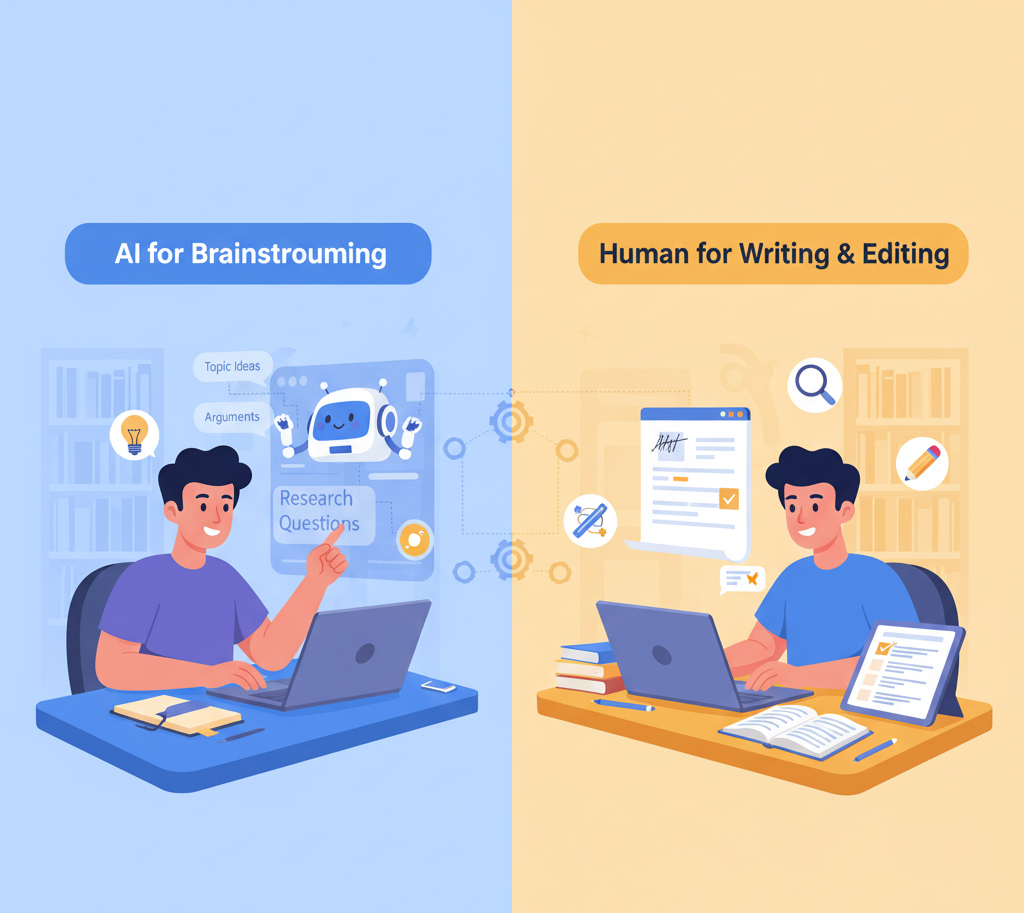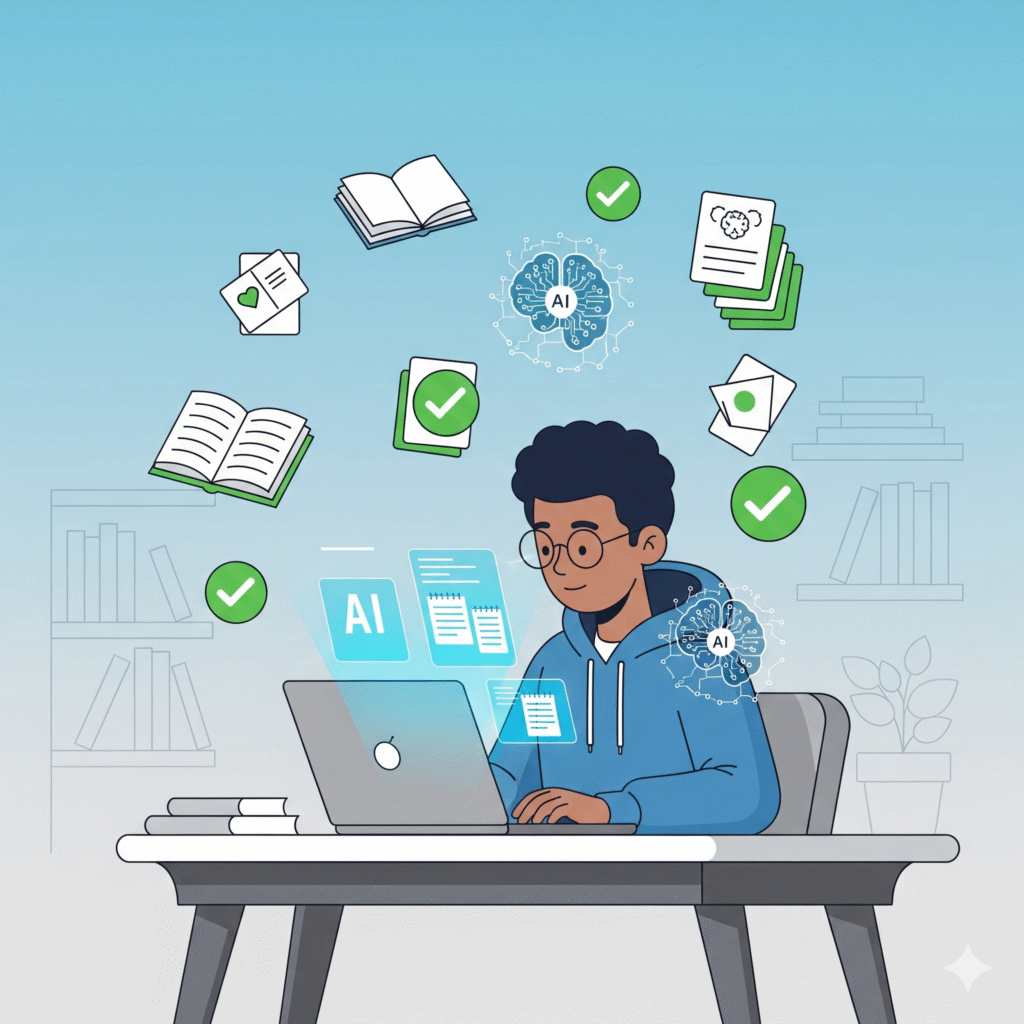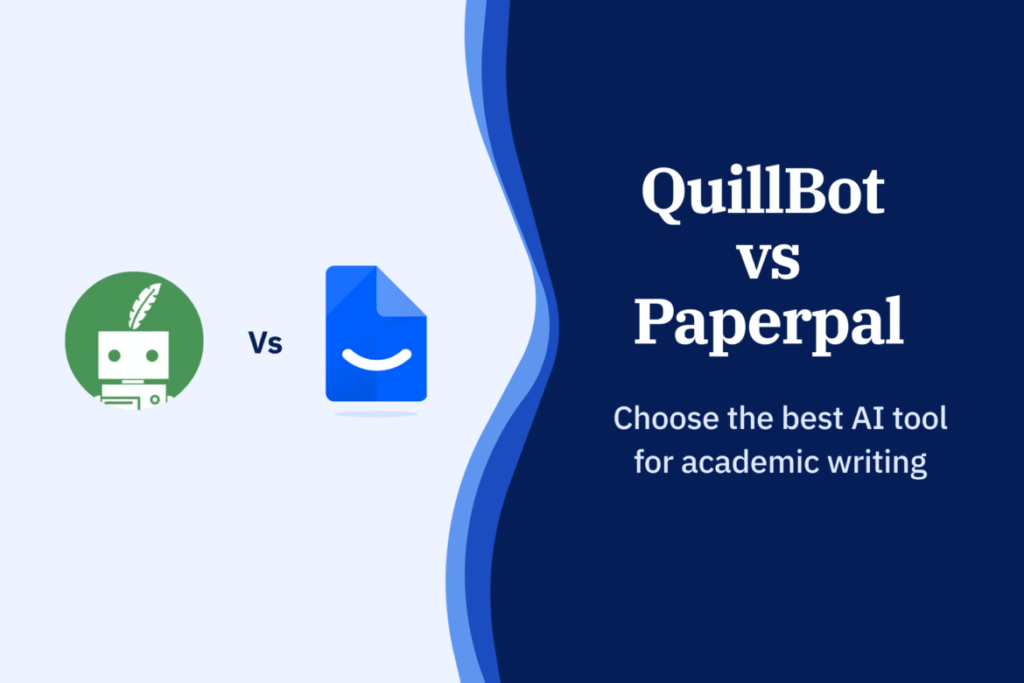Introduction: The AI Dilemma for Students
Artificial Intelligence (AI) has become a buzzword in academic circles, transforming how students approach assignments, essays, and research papers. With tools like ChatGPT, Grammarly, and QuillBot at their fingertips, students are eager to use AI for brainstorming, paraphrasing, or even writing entire sections of their academic work. However, this convenience comes with a looming fear—plagiarism. Many worry that using AI could lead to academic misconduct, jeopardizing their grades and integrity.
This post aims to demystify AI’s role in academic writing by providing a comprehensive guide on how to use AI ethically and effectively. Whether you’re a high school student navigating college essays or a graduate tackling research papers, this guide will help you enhance your work while staying within the boundaries of academic honesty.
Understanding “Ethical Use”: What Does it Really Mean?
What is Plagiarism in the Age of AI?
Plagiarism traditionally refers to copying someone else’s work without acknowledgment. But with AI, the lines blur. AI-generated text may be coherent and grammatically correct but lacks the context or personal understanding that educators expect. Submitting AI-generated content without review or modification could be flagged as plagiarism because it doesn’t reflect your voice or comprehension.
University Policies: Know Before You Use
Different universities have varying guidelines regarding AI use. Some may allow AI-assisted writing tools as long as proper citations are included, while others may prohibit them entirely. Always consult your institution’s academic honesty policy before submitting work that has been augmented with AI tools.
AI as a Tool vs. AI as a Replacement
The ethical approach is to treat AI as a support tool, similar to a calculator or a thesaurus—not as a replacement for your effort. AI should aid your learning, not bypass it.
How AI Can Ethically Supercharge Your Academic Writing Process
1. Brainstorming & Idea Generation
AI tools can spark creativity by suggesting essay topics, structuring arguments, or identifying lesser-known angles. For example, inputting a prompt like “Best strategies to study for finals” into ChatGPT can produce a variety of ideas that you can adapt to your own experiences.
Prompt Example:
“Help me brainstorm ideas for an essay on renewable energy’s role in climate change.”
2. Research Assistant
AI can quickly summarize articles, highlight key points, and even suggest related research papers. However, summaries should be used as guides—not as replacements for reading the full source.
Prompt Example:
“Summarize this article and give three key takeaways that I can use in my essay.”
✅ Always cross-check with original research papers, books, or peer-reviewed articles.
3. Grammar & Style Improvement
Once you’ve written your content, AI-powered tools like Grammarly or QuillBot can assist in refining grammar, tone, and readability. This helps ensure your ideas are presented clearly without altering the substance.
How to Use:
- Draft your essay manually.
- Use Grammarly for error-checking.
- Use QuillBot’s suggestions for sentence clarity but review every change.
4. Paraphrasing & Rewriting (With Caution)
Paraphrasing tools help reword sections while keeping the meaning intact, but they should never be used to bypass writing. Rewrite ideas in your own voice and ensure you understand the concept fully before submission.
Never: Submit paraphrased content verbatim.
Always: Review, edit, and add personal insights.
5. Flashcard & Study Guide Creation
AI can turn notes into structured study aids. For example, you can input bullet points from a lecture and ask AI to create quiz questions or flashcards to test your understanding.
Prompt Example:
“Create five multiple-choice questions based on the following notes.”
The “Never Do This” List: AI Pitfalls to Avoid
❌ Don’t submit AI-generated essays or paragraphs as your own work.
❌ Avoid relying on AI for summaries without checking the source material.
❌ Don’t use AI to generate references without verifying them.
❌ Never assume AI suggestions are factually correct—always research.
❌ Avoid copying paraphrased content without modification and citation.
Conclusion: Becoming a Smarter Student with AI
AI is here to stay, and using it wisely can improve not only your grades but also your learning process. Ethical AI use is about leveraging technology to enhance comprehension, creativity, and efficiency—not replacing human effort. By understanding plagiarism, citing appropriately, and using AI tools responsibly, you’ll build trust with educators and strengthen your academic integrity.
Stay curious, stay ethical, and let AI become your ally—not your crutch.



